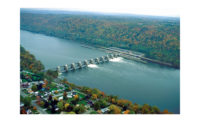WRDA 2020 May Have to Wait Until Lame Duck
A new Water Resources Development Act, or WRDA, has made headway in Congress, most recently with House passage of a bill authorizing about $9 billion for Army Corps of Engineers flood and storm protection, environmental restoration and other projects.
But with time running short before Congress breaks for the Nov. 3 elections, industry sources say water infrastructure legislation may be put off until an expected lame duck session.
The 2020 WRDA that the House approved on July 29 by voice vote, includes at least $8.6 billion in federal funds for about three dozen Corps projects. It has strong bipartisan support from Transportation and Infrastructure Committee leaders and the rank and file, an unusual break from the fierce partisanship that has taken hold in Congress.
In the Senate, the WRDA bill is one of two water infrastructure measures that the Environment and Public Works Committee cleared unanimously on May 6. It has $5.1 billion for 26 Corps projects. But at ENR press time, the bills had yet to come up for a Senate floor vote.
One must-pass bill by Oct. 1 is a stopgap appropriations measure to keep agencies operating after fiscal year 2020 ends. Jim Walker, American Association of Port Authorities director of government relations, notes congressional appropriators, especially Senate committee Chairman Richard Shelby (R-Ala.), “have historically avoided linking authorization bills [like WRDA] onto appropriations bills.” Walker adds, “If WRDA can’t be worked into the September schedule, then it will likely be taken up in a lame duck session.”
Another industry source says House and Senate agreement on a compromise WRDA is conceivable by the end of September, but unlikely. “I see a lame duck for WRDA,” the source says, maybe as part of a broader infrastructure package.
If a new WRDA does become law this year, it would continue a six-year streak of enacting water resources legislation every other year.



